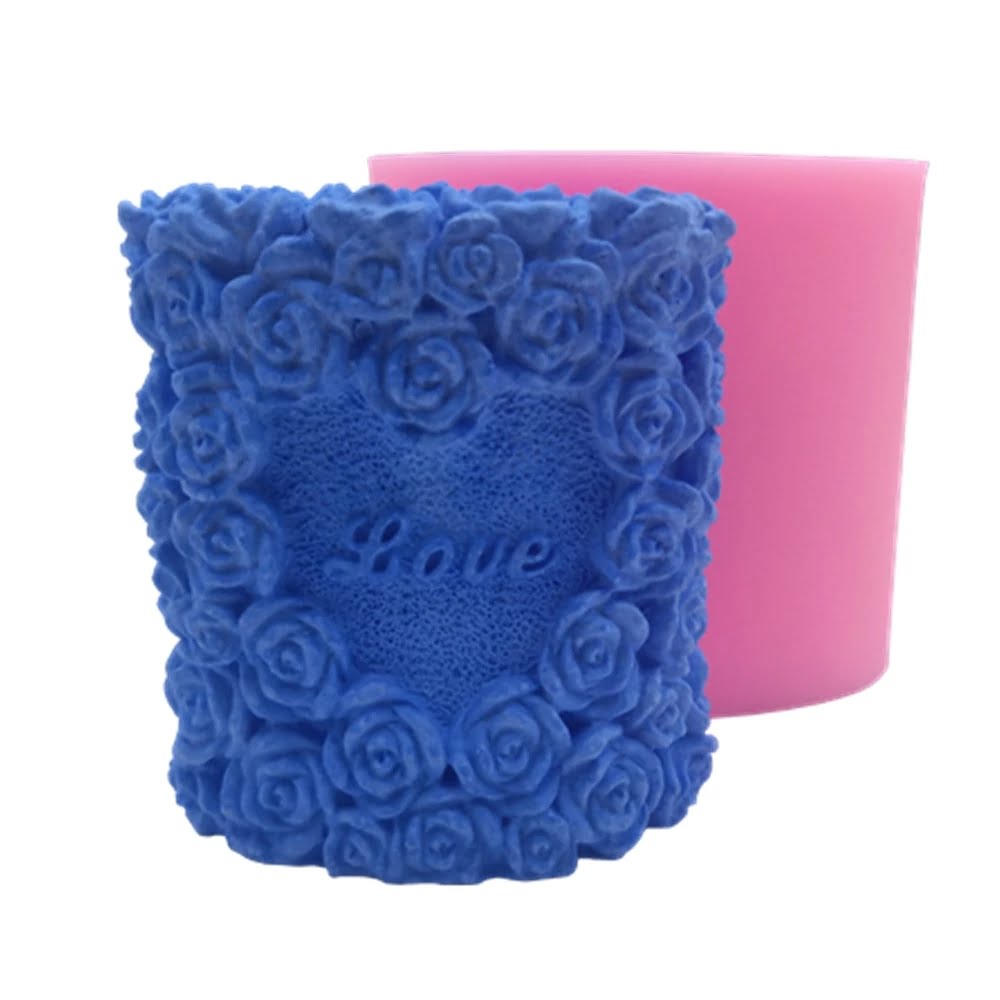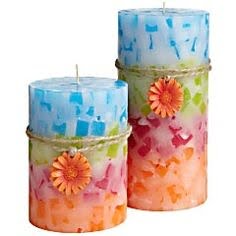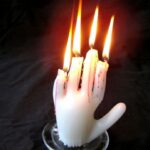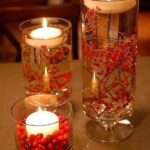In the world of candle making, a term frequently used is “hot throw.” But what exactly does this mean? To unravel this mystery and shed light on its significance, this blog post will explore the secrets behind the hot throw phenomenon in candle making.
Hot throw refers to the strength and potency of a candle’s fragrance when it is burning. It determines how well a candle emits its scent into the surrounding space, creating a pleasant and inviting atmosphere. Understanding hot throw is essential for candle makers who strive to produce high-quality candles with captivating fragrances.
This blog post will delve into the definition of hot throw and its importance in the candle making process. We will explore how various factors, including wax selection and quality, as well as fragrance oils, impact hot throw capabilities. Additionally, we will discuss techniques for testing hot throw efficiency and troubleshooting common problems that may arise.
By uncovering the secrets behind hot throw, aspiring candle makers can elevate their craft to create indulgent and satisfying fragrance experiences. So let’s dive in and uncover these hidden mysteries together.
Defining Hot Throw and its Importance in Candle Making
When it comes to candle making, one term that is frequently used and highly emphasized is “hot throw.” But what exactly does hot throw mean and why is it so important in the world of candle making? In this section, we will define hot throw and delve into its significance in creating the perfect candle fragrance experience.
Hot throw refers to the strength and intensity of a candle’s fragrance when it is burning. It is the measure of how well a candle releases its scent into the surrounding space, filling it with a delightful aroma. When a candle has a strong hot throw, it means that its fragrance can effortlessly permeate through an entire room or even an entire house.
Understanding the importance of hot throw is crucial for any candle maker aiming to create high-quality products. The main goal of scented candles is to provide an enjoyable sensory experience, which relies heavily on their ability to release a captivating fragrance when lit. A robust hot throw not only enhances the ambiance and atmosphere but also contributes to creating memorable moments and evoking specific emotions.
To better grasp the concept of hot throw, let’s consider the scenario of walking into a room where a beautifully scented candle is burning. The moment you enter, you are met with a delightful burst of fragrance that immediately captivates your senses. This instant impact and widespread distribution of scent are what make a strong hot throw desirable in candles.
| Types of Candles | Hot Throw Strength |
|---|---|
| Candle A (Strong Hot Throw) | 5 out of 5 |
| Candle B (Moderate Hot Throw) | 3 out of 5 |
| Candle C (Weak Hot Throw) | 1 out of 5 |
From the data above, it is clear that Candle A, with its strong hot throw, would provide a more intense and enjoyable fragrance experience compared to Candle B or Candle C. This underscores why understanding and achieving a strong hot throw is vital in candle making.
Now that we have defined hot throw and explored its importance in candle making, let’s move on to the next section where we will examine the factors that can affect hot throw, particularly wax selection and quality.
Factors Affecting Hot Throw
Before diving into the factors that affect hot throw in candle making, it is essential to have a clear understanding of what hot throw actually means and why it holds such significance in the process. Hot throw refers to the strength and intensity of fragrance released when a candle is burning. It is what allows us to enjoy the delightful aroma filling the air when we light a scented candle.
Hot throw plays a crucial role in creating a satisfying experience for candle enthusiasts. When we burn a scented candle, we not only seek the flickering ambiance but also desire to immerse ourselves in a captivating fragrance. The hot throw determines how well the candle scent spreads throughout a space, ensuring that no corner is left untouched by its alluring aroma.
One of the critical factors influencing the hot throw of a candle is the selection and quality of wax used during its creation. The type of wax chosen can greatly impact how efficiently fragrance is released while the candle burns. Different waxes have different melt points, burn characteristics, and capacities for holding fragrance oils, all of which contribute to their ability to achieve a strong hot throw.
When selecting wax for optimal hot throw potential, considerations need to be made regarding its melt point. The melt point determines at what temperature the wax will begin to release fragrance into the air. A lower melt point may result in faster fragrance release but could also lead to increased issues with melting pool maintenance and uneven burning.
Moreover, incompatible or low-quality wax can hinder hot throw capabilities regardless of other factors involved. It’s important for candle makers to choose high-quality waxes that are specifically designed for strong scent diffusion and have been tested for performance consistency.
By carefully considering these aspects of wax selection and quality control, candles can be crafted with exceptional hot throws that captivate our senses and transform any space into an aromatic haven.
The Role of Fragrance Oils
Fragrance oils play a crucial role in the candle making process as they are responsible for enhancing the hot throw potential of candles. When selecting fragrance oils, it is important to choose high-quality options that have good compatibility with the wax and a strong scent throw. This section will delve into the importance of fragrance oils in maximizing hot throw and provide insights on selecting the right fragrance oils for optimal results.
Maximizing Hot Throw Potential
The choice of fragrance oil can significantly impact the hot throw of a candle. A high-quality fragrance oil helps to ensure that the candle releases a strong and lasting scent when lit. The molecules in the fragrance oil are released into the air as the candle burns, creating an aromatic experience for those nearby.
When selecting fragrance oils for hot throw enhancement, it is crucial to consider their compatibility with the chosen wax. Different fragrances may react differently with various waxes, so it is essential to test compatibility before using them in a large batch. Additionally, fragrance oils with a strong scent throw are preferable as they will provide a more intense aroma when burned.
Selecting High-Quality Fragrance Oils
To achieve optimal hot throw, it is important to invest in high-quality fragrance oils that have been specifically designed for use in candles. These fragrance oils are formulated to be long-lasting and have been tested for performance, ensuring consistent results.
When selecting fragrance oils, look for those that are made from top-quality ingredients and have undergone thorough testing for safety and performance. It is also a good idea to choose fragrance oils from reputable suppliers who specialize in candle making supplies.
In addition to quality, consider choosing fragrance oils that align with your desired scent profile and target audience preferences. Experimenting with different combinations of scents can help you create unique fragrances that stand out in the market while still delivering excellent hot throw performance.
By using high-quality fragrance oils compatible with your chosen wax, you can enhance the hot throw potential of your candles and create a memorable sensory experience for customers. The next section will focus on testing techniques and methods that can be used to evaluate the hot throw efficiency of your candles.
Testing Hot Throw
When it comes to candle making, achieving a strong hot throw is essential. A candle with a good hot throw releases a pleasant fragrance when it is burned, creating an enjoyable sensory experience for anyone in the vicinity.
As a candle maker, testing the hot throw of your creations is crucial to ensure that your customers are satisfied with the end product. In this section, we will explore various techniques and methods used by candle makers to assess the hot throw of their candles.
Burn tests are one of the most common techniques employed by candle makers to evaluate hot throw. This involves burning the candle in a controlled environment and observing the strength of the fragrance release. Candle makers can conduct burn tests on different types of waxes, varying fragrance loads, and different container sizes to determine which combination produces the best hot throw.
Another method used for testing hot throw is conducting fragrance load experiments. This entails adjusting the amount of fragrance oil added to the wax during the candle making process and assessing its impact on the scent release when burned. By gradually increasing or decreasing the fragrance load, candle makers can find the optimal ratio that produces a powerful hot throw.
In addition to burn tests and fragrance load experiments, there are other evaluation methods that can be employed by candle makers to assess hot throw efficiency. One such method is known as “cold sniffing.” This involves smelling the unlit candle without burning it to determine if it emits a strong fragrance when at room temperature. Candle makers can also invite friends or volunteers to test their candles and provide feedback on the scent potency during burning.
By utilizing these testing techniques and methods, candle makers can ensure that their creations deliver an exceptional sensory experience through a powerful hot throw. However, it’s important to note that achieving a strong hot throw is not solely dependent on testing alone.
Factors such as wax selection, quality of fragrance oils used, and proper troubleshooting play significant roles in enhancing the hot throw potential of candles. In the next section, we will delve into these factors and explore how they contribute to creating a remarkable hot throw.
Troubleshooting Hot Throw Issues
Common Problems with Hot Throw
When it comes to achieving a strong hot throw in candle making, several common issues can arise that may hinder the fragrance release and overall performance of the candle. One such problem is weak fragrance release, where the scent does not disperse adequately when the candle is burned.
This can result in a disappointing sensory experience for customers who are looking for a robust fragrance throughout their space. Another issue is an uneven distribution of fragrance, where certain areas of the candle emit a stronger scent while others remain relatively scentless.
Possible Solutions for Weak Fragrance Release
To address weak fragrance release, there are some steps that candle makers can take to optimize the hot throw of their creations. Firstly, it is important to ensure that the chosen fragrance oil is compatible with the wax being used.
Some fragrances may not perform well with certain waxes, leading to weaker hot throw capabilities. It is also crucial to assess the quantity or load of fragrance oil used in each batch as an insufficient amount can significantly impact the strength of hot throw.
In addition, adjusting the wick size and type can contribute to achieving better fragrance release. Using a wick that is too small or large for the specific candle size and vessel may result in an inadequate burn and subsequent weak hot throw. Experimenting with different wicks and obtaining feedback from burn tests can help identify and resolve this issue effectively.
Addressing Uneven Distribution of Fragrance
Uneven distribution of fragrance within a candle can be frustrating both for candle makers and consumers, as it affects the overall aromatic experience. One reason behind this issue could be improper pouring temperature and technique during the candle-making process. If pour temperatures are too low or high, it can cause separation between wax and fragrance oils, resulting in an inconsistent dispersion of scent when burning.
To address this problem, ensuring proper pouring techniques and appropriate pour temperatures is vital. It is recommended to follow the manufacturer’s guidelines for the wax and fragrance oils being used. Additionally, giving the candles enough curing time before testing their hot throw can also help prevent uneven distribution issues.
Furthermore, thorough mixing of fragrance oils and wax during the candle-making process is essential to achieve an even dispersion of scent. Proper stirring or blending techniques should be employed to ensure that all fragrance oils are evenly incorporated into the melted wax.
By troubleshooting these common problems related to hot throw, candle makers can enhance their skills and create candles with a powerful and consistent fragrance release, resulting in a more satisfying sensory experience for customers.
Beyond Hot Throw
When it comes to creating the ultimate candle experience, hot throw is just one piece of the puzzle. While a strong hot throw is certainly important in candle making, there are other factors that contribute to the overall sensory experience and satisfaction of burning a candle. In this section, we will explore these additional elements that should be considered alongside hot throw for a complete candle experience.
One such aspect is the concept of cold throw. Cold throw refers to the fragrance emitted by a candle when it is not lit. This is especially important for candles that are displayed or used as decorative pieces. A high-quality candle should have a noticeable cold throw that fills the room with its aroma even before it is burned. Candle makers can achieve a strong cold throw by using fragrance oils with good compatibility and scent strength.
Another factor to consider is burn time. The duration for which a candle burns plays a significant role in determining its overall value and satisfaction level. Customers often expect candles to burn for extended periods, so it’s important to select waxes and wicks that promote longer burn times without compromising on fragrance release. High-quality waxes with lower melting points tend to provide longer burn times while maintaining an optimal scent throw.
In addition to hot throw, cold throw, and burn time, aesthetics also play a crucial role in creating an exceptional candle experience. The appearance of a candle can greatly influence customer perception and enhance their enjoyment during use. Factors such as wax color, container design, and labeling all contribute to the overall aesthetic appeal of the product. Candle makers should strive for visually appealing products that align with their brand image and create a positive impression on customers.
By considering these factors alongside hot throw, candle makers can elevate their creations and deliver an unforgettable sensory experience to customers. It’s important to strike a balance between all these elements in order to create well-rounded candles that not only provide a strong hot throw but also excel in cold throw, burn time, and aesthetics.
| Factors for a Complete Candle Experience | Description |
|---|---|
| Cold Throw | The fragrance emitted by a candle when it is not lit. |
| Burn Time | The duration for which a candle burns. |
| Aesthetics | The appearance of a candle, including wax color, container design, and labeling. |
Conclusion
In conclusion, understanding the concept of hot throw is essential for candle makers who want to create fragrant experiences that delight their customers. We have explored the definition and importance of hot throw in candle making, uncovering its impact on the overall sensory experience when burning candles. Furthermore, we have discussed how factors such as wax selection and fragrance oils can enhance hot throw potential.
The type and quality of wax used in candle making play a crucial role in achieving a strong hot throw. Factors like melt point, fragrance load, and burn characteristics contribute to the efficiency of hot throw. Additionally, selecting high-quality fragrance oils with good compatibility and strong scent throw can maximize the aromatic experience of burning candles.
To ensure optimal hot throw, candle makers employ various testing techniques and methods. Burn tests and fragrance load experiments are among the evaluation methods used to determine hot throw efficiency. By troubleshooting common issues like weak fragrance release or uneven distribution, candle makers can overcome challenges and achieve a powerful hot throw.
While hot throw is an essential factor to consider, it is important not to overlook other elements that contribute to the overall candle experience. Cold throw, burn time, and aesthetic appeal all play a part in creating a well-rounded and satisfying product for consumers.
Frequently Asked Questions
Why does my candle have no hot throw?
If your candle has no hot throw, it could be due to several factors. Firstly, the type and quality of fragrance oil you’re using can greatly impact the scent throw of a candle when it’s burning. Low-quality or diluted fragrance oils may not have enough potency to release a strong aroma when heated. Another possibility is that you didn’t use enough fragrance oil in your candle recipe.
The general rule of thumb is to use about 6-10% fragrance oil to wax ratio, but using too little can result in a weak hot throw. Additionally, the size and type of wick used in your candle can influence its scent throw as well. A wick that is too small may not create a sufficiently hot flame to effectively disperse the fragrance oils.
What is cold throw vs hot throw in candle making?
Cold throw and hot throw are terms commonly used in the context of candle making to describe the strength and intensity of a candle’s fragrance at different stages of its burning process. Cold throw refers to the scent that emanates from a candle when it is unlit or before it is burned. This represents how fragrant the candle is when just sitting on display or stored away.
On the other hand, hot throw describes the aroma released by a candle when it’s lit and burning, filling up the surrounding space with its scent. Hot throw is considered important because it determines how well a candle fills a room with its fragrance while burning.
What does throw mean on a candle?
In relation to candles, “throw” refers specifically to the ability of a candle’s scent or aroma to fill an area with fragrance while burning. It measures how easily and effectively a candle disperses its smell throughout a room or space when lit. The term includes both cold throw (the scent released by an unlit or unused candle) and hot throw (the aroma produced by a burning candle).
A good throw means that the fragrance from the candle can be smelled even from a distance, creating an inviting atmosphere and enhancing the sensory experience. Achieving a strong and consistent throw is a key goal for candle makers to ensure customer satisfaction.

Welcome to my candle making blog! In this blog, I will be sharing my tips and tricks for making candles. I will also be sharing some of my favorite recipes.





